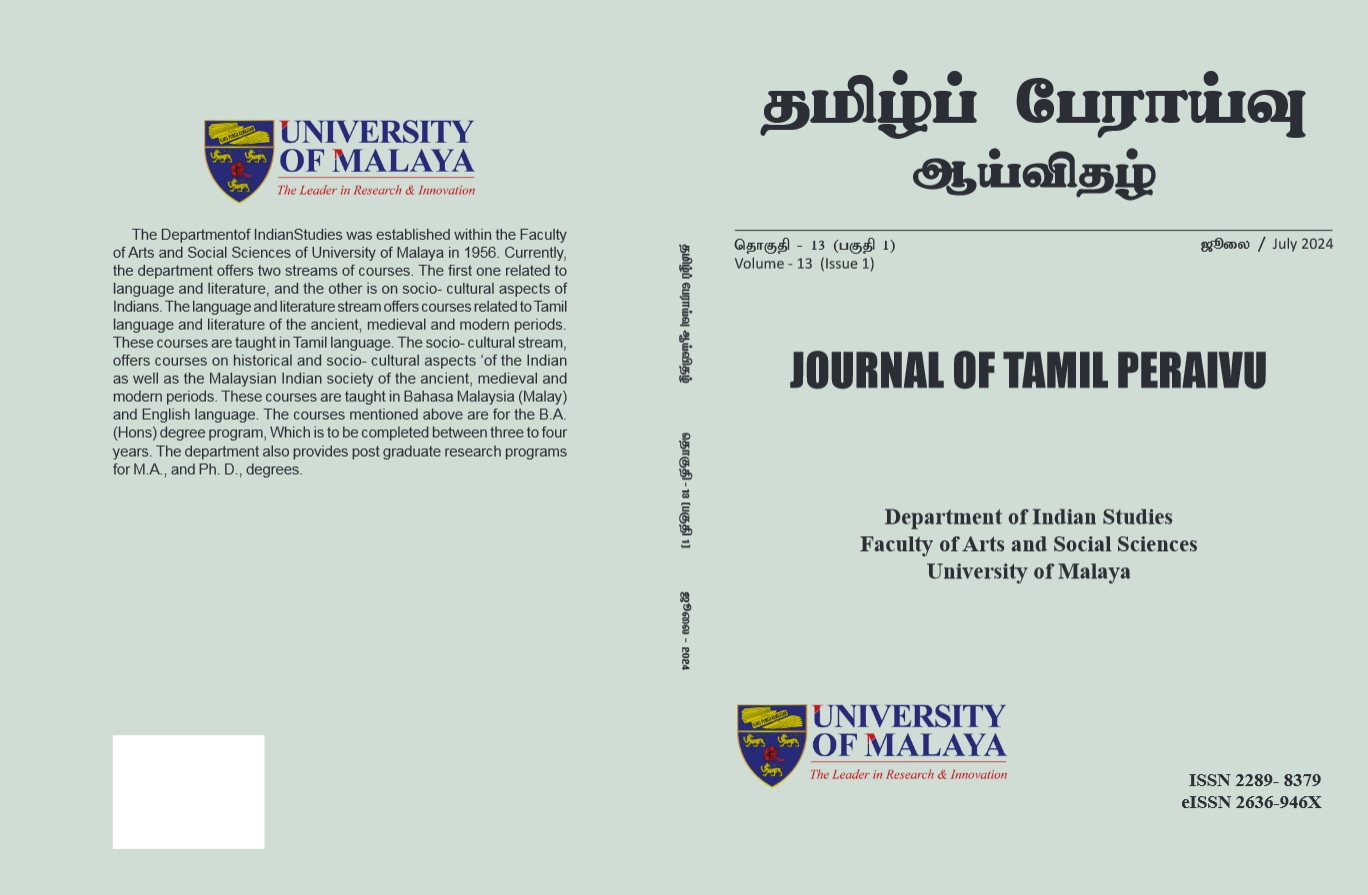மொழிபெயர்ப்பின் முக்கிய விதிகள் மற்றும் இன்றியமையாப் பண்புகள் (Basic Rules and Essential Characteristics of Translation)
DOI:
https://doi.org/10.22452/JTP.vol13no1.14Keywords:
Tamil Translation, Translation Principles, Translation Practices, Translation Quality, Language Medium ShiftAbstract
At the dawn of the 19th century, Tamil translation efforts saw significant progress, initially focusing on providing essential educational texts in Tamil. However, by the mid-19th century, the shift towards English as the primary language of instruction in schools led to a decline in translation activities, relegating Tamil to a secondary role in education. This stagnation persisted until the early 20th century when a renewed emphasis on education in native languages revived translation work. The resurgence of Tamil translation efforts aimed to make research findings, scholarly articles, scientific advancements, and agricultural technologies accessible in Tamil. This period marked a critical shift towards translating a wide array of knowledge into Tamil to facilitate learning and dissemination across various fields. For over two millennia, Tamil translation has been influenced by classical languages such as Pali, Prakrit, and Sanskrit. The practice of translating texts, often initiated by Western scholars, underscores the importance of bridging gaps in translation quality and accessibility. Bharathiyar's call for translators to address deficiencies in our practices highlights the ongoing need for improvement. Despite the translation of numerous foreign scholarly works into Tamil, understanding the core principles and qualities of effective translation remains essential. This article explores these fundamental aspects, offering insights into the evolving landscape of Tamil translation and its critical role in the preservation and advancement of knowledge in the Tamil-speaking world.



